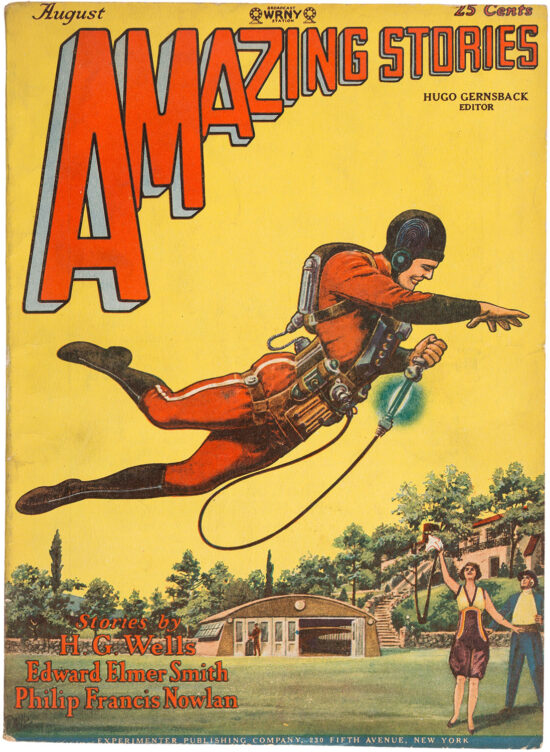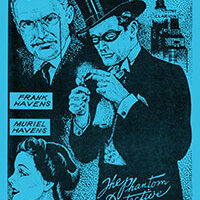
Fortunately, many of the articles about the Clooney/Rogers series have been using photos from the 1979-81 TV series, Buck Rogers in the 25th Century, starring Gil Gerard. Still, the Amazing Stories cover pops up often when there’s an article about Rogers.
Any pulp fan worth their salt knows that there was another, equally significant story in that issue of the pioneering SF pulp.
Philip Francis Nowlan‘s novella, “Armageddon — 2419 A.D.,” introduced Anthony Rogers (he wasn’t called “Buck” in the pulps), who is overcome by gases while investigating a mine for the American Radioactive Gas Corp. and wakes up nearly 500 years later to a whole, new world. It’s a Rip Van Winkle story told in a science-fiction setting.
(Actually, I never cared much for the Buck Rogers comic strips. I think it was the artwork that turned me off more than the stories. But I loved the two novellas — “Armageddon” and “The Airlords of Han” {AS, March 1929} — when I read them back in the 1970s after they were paired in paperback.)
The first installment of “The Skylark of Space,” by E.E. “Doc” Smith and Lee Hawkins Garby, was the other significant story in that issue. What’s shown on the cover is a scene from Chapter IV, when the story’s main protagonist, Richard “Dick” Seaton, first demonstrates that he has harnessed the catalyst called “X” for an anti-gravity device.
Here’s the paragraph that is depicted by artist Frank R. Paul on the cover:
(Seaton, his fiancée Dorothy Vaneman, his millionaire friend Martin Crane, and Dorothy’s father) made their way to the testing shed, in front of which Seaton donned a heavy leather harness, buckled about his shoulders, body and legs; to which were attached numerous handles, switches, boxes and other pieces of apparatus. He snapped the switch which started the Tesla coil in the shed and pressed a button on an instrument in his hand, attached to his harness by a small steel cable. Instantly there was a creak of straining leather and he shot vertically into the air for perhaps a hundred feet, where he stopped and remained motionless for a few moments. Then the watchers saw him point his arm and dart in the direction in which he pointed. By merely pointing, apparently, he changed his direction at will; going up and down, forward and backward, describing circles and loops and figures of eight. After a few minutes of this display he descended, slowing up abruptly as he neared the ground and making an easy landing.
So, folks, feel free to use images from the old TV series, the comic strip, or even the interior illustrations from Amazing Stories. But, remember: No, that isn’t Buck Rogers on that Amazing Stories cover.



I just took a look at my copy of the follow-up issue, and the cover did have Anthony “Buck” Rogers on it. Unfortunately it was a bore, which is hard to believe coming from Paul.